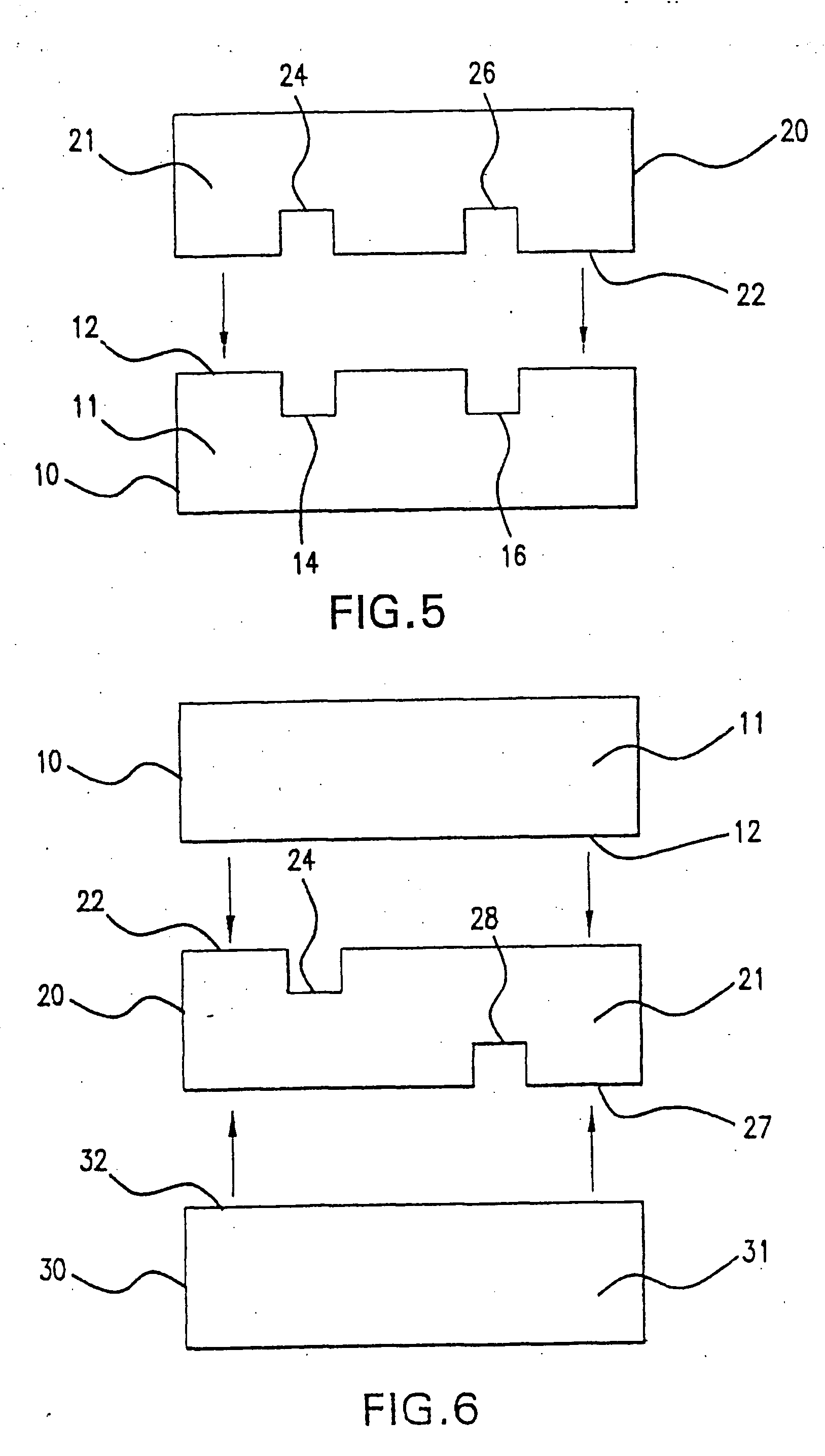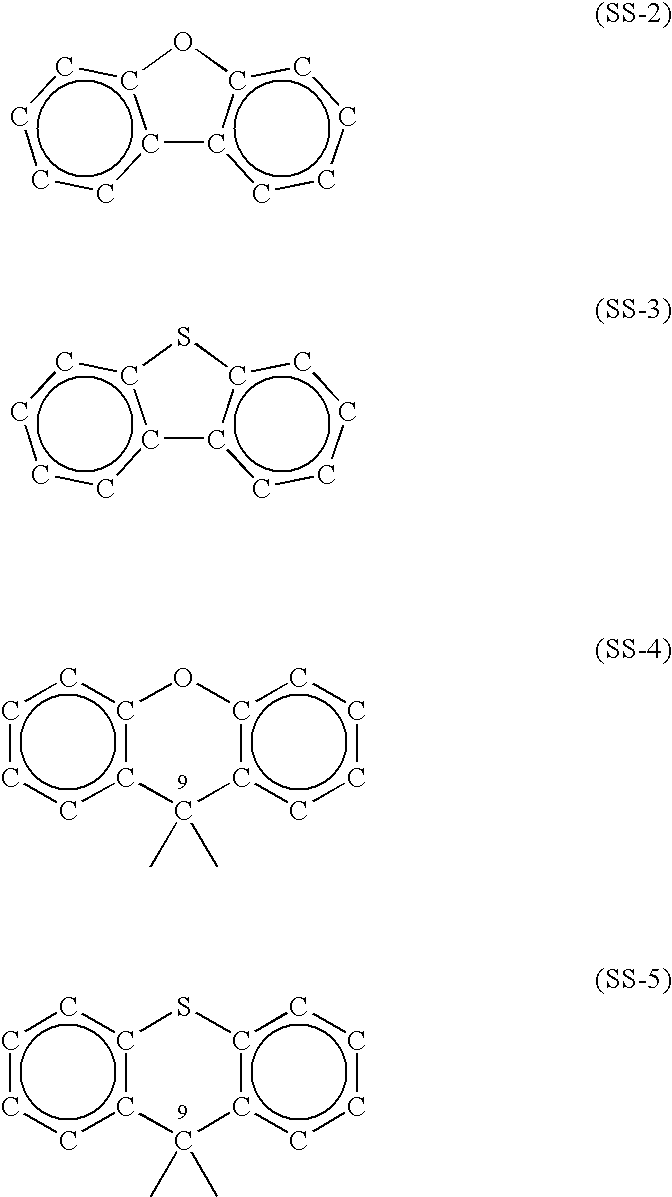Aromatic chalcogen compounds and their use
a chalcogen compound and aromatic chalcogen technology, applied in the direction of electrographic process, corona discharge, instruments, etc., can solve the problems of inefficiency and bulkyness of conventional inorganic electronic devices such as cathode ray tubes, and achieve the effect of reducing the cost of production and maintenan
- Summary
- Abstract
- Description
- Claims
- Application Information
AI Technical Summary
Benefits of technology
Problems solved by technology
Method used
Image
Examples
example 1
[0093] This example illustrates the preparation of Chalcogen compound CM-6.
[0094] Pentaerythritol (272 parts) was reacted with 9H-xanthene-9-carboxylic acid (2260 parts) and a small catalytic amount of p-toluene sulfonic acid in refluxing toluene (26000 parts) at reflux for 18 hours, during which time generated water was removed using a trap under conventional conditions. Cooling to 25° C. produced a precipitate (discarded). Chromatography through silica gel, eluted by dichloromethane-hexane (70-30) gave CM-6 (1620 parts) as confirmed by 1H-NMR and 13C-NMR.
example 2
[0095] This Example illustrates the preparation of Chalcogen compound CM-7.
[0096] Using conventional anhydrous techniques in a nitrogen atmosphere, dibenzopyran (1000 parts) in tetrahydrofuran (13350 parts) was deprotonated by the slow addition of 1.00 molar equivalents based on dibenzopyran of 1.6 M n-butyllithium in hexane at −78° C. followed by a 5 minute hold. While maintaining the reaction temperature at −78° C., 550 parts 1,3-dibromopropane was added. Thereafter the mixture was allowed to warm to 25° C. The tetrahydrofuran was removed at reduced pressure. The resulting residue was partitioned between water and dichloromethane. The dichloromethane layer was washed successively with aqueous 5% sodium bicarbonate and saturated aqueous sodium chloride brine and then dried over anhydrous magnesium sulfate and concentrated using vacuum to give a second residue. The second residue, a white solid, was purified chromatographically using silica gel eluted with 4% ethyl acetate in hexan...
example 3
[0097] This Example illustrates the preparation of Chalcogen compound CM-8.
[0098] Using conventional anhydrous techniques in a nitrogen atmosphere, dibenzopyran (2000 parts) in tetrahydrofuran (13350 parts) was deprotonated by the slow addition of 0.99 molar equivalents based on dibenzopyran of 1.6 M n-butyllithium in hexane at −78° C. followed by a 5 minute hold. While maintaining the reaction temperature at −78° C., 1159 parts 1,4-bis(bromomethyl)benzene (i.e. p-xylylene dibromide) in 8900 parts tetrahydrofuran was added at a steady rate over 15 minutes. The mixture was maintained at a temperature of −70° C. for 1 hour. Thereafter the mixture was allowed to warm to 25° C. and was maintained at a temperature of 25° C. for 30 minutes. The reaction was quenched by addition of ethyl acetate. The tetrahydrofuran was removed at reduced pressure. The resulting residue was partitioned between water and dichloromethane. The dichloromethane layer was dried over anhydrous sodium sulfate and...
PUM
| Property | Measurement | Unit |
|---|---|---|
| relative mass percent | aaaaa | aaaaa |
| relative mass percent | aaaaa | aaaaa |
| thicknesses | aaaaa | aaaaa |
Abstract
Description
Claims
Application Information
 Login to View More
Login to View More - R&D
- Intellectual Property
- Life Sciences
- Materials
- Tech Scout
- Unparalleled Data Quality
- Higher Quality Content
- 60% Fewer Hallucinations
Browse by: Latest US Patents, China's latest patents, Technical Efficacy Thesaurus, Application Domain, Technology Topic, Popular Technical Reports.
© 2025 PatSnap. All rights reserved.Legal|Privacy policy|Modern Slavery Act Transparency Statement|Sitemap|About US| Contact US: help@patsnap.com



